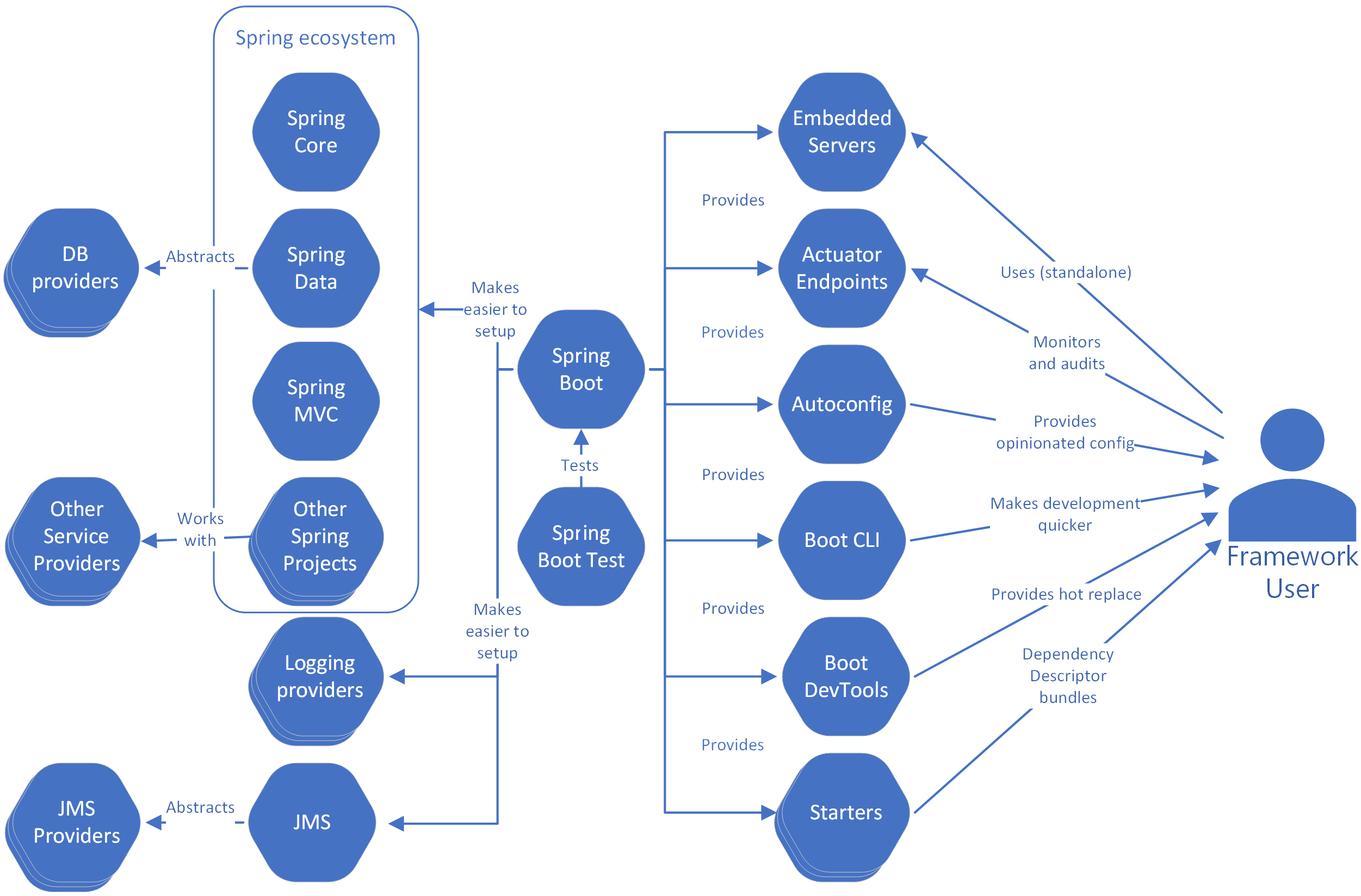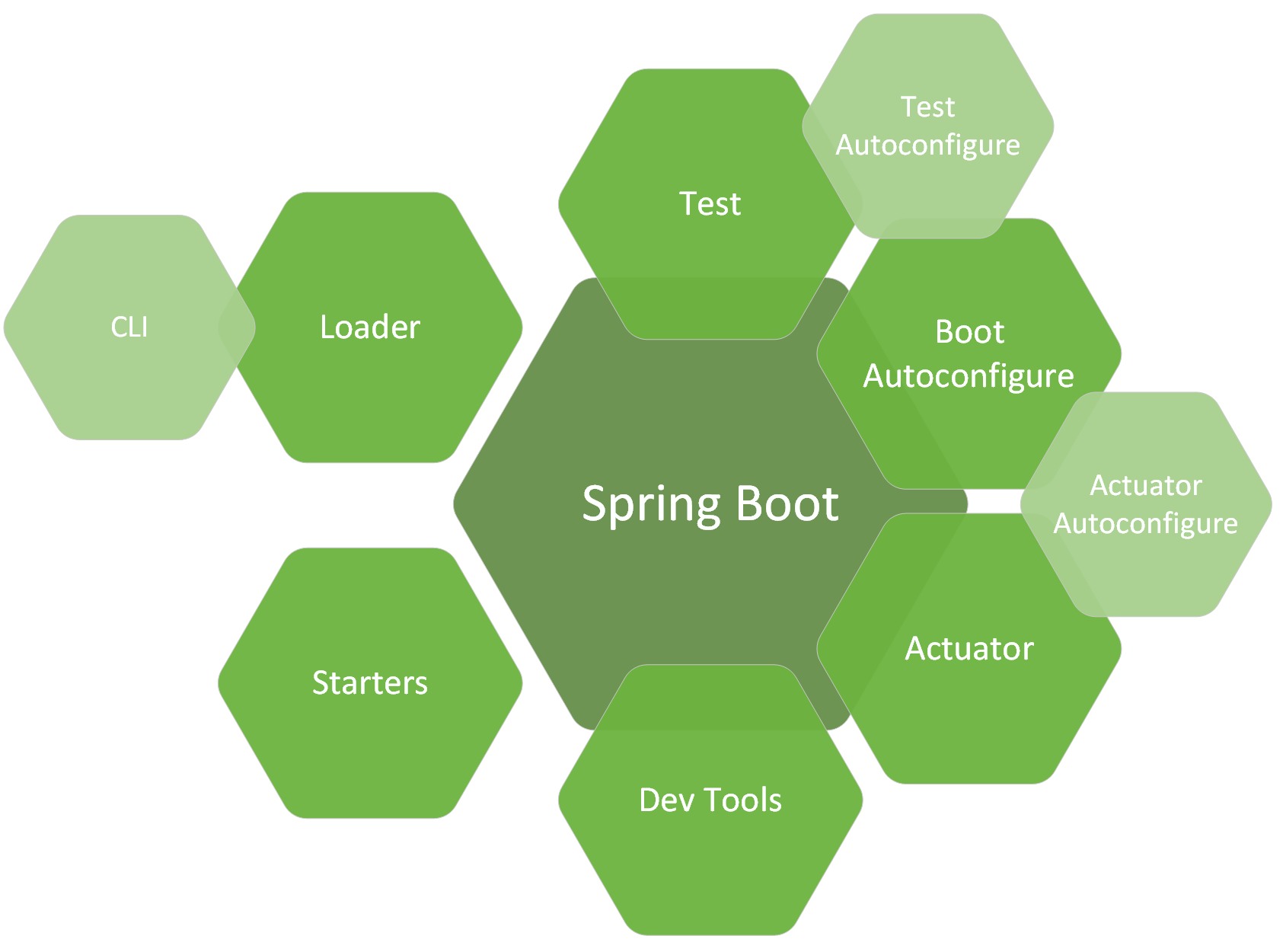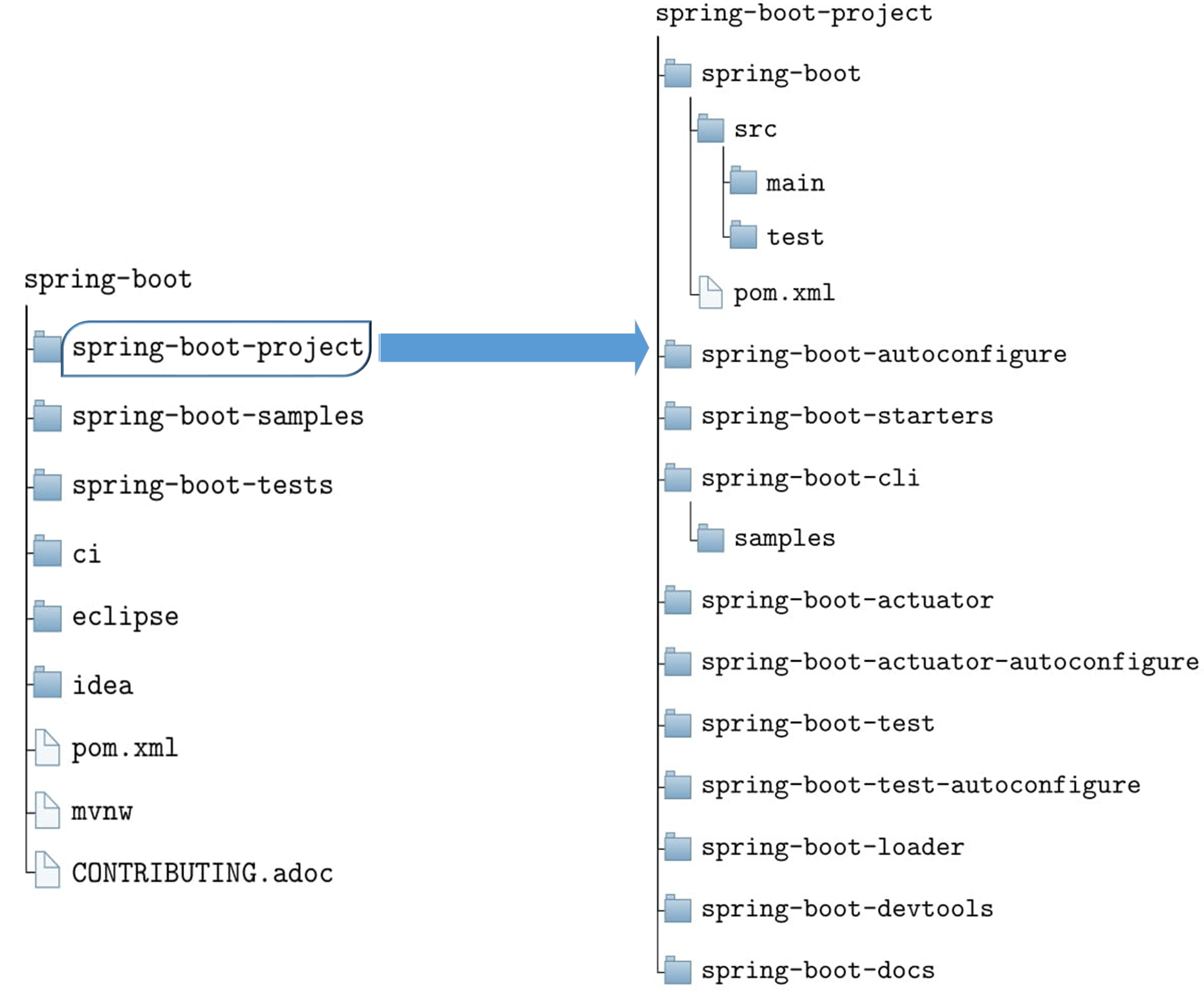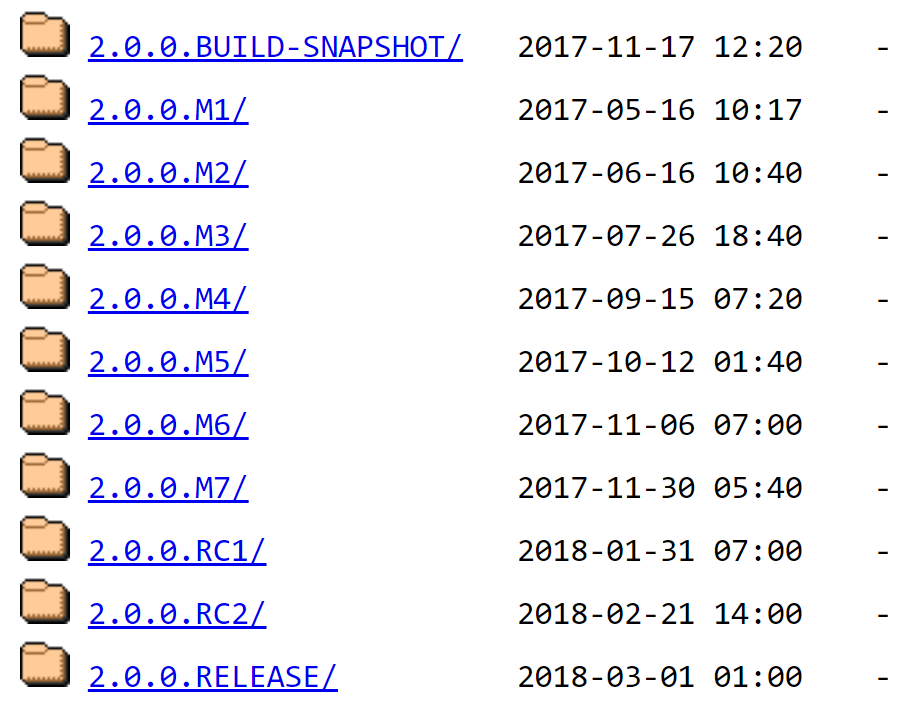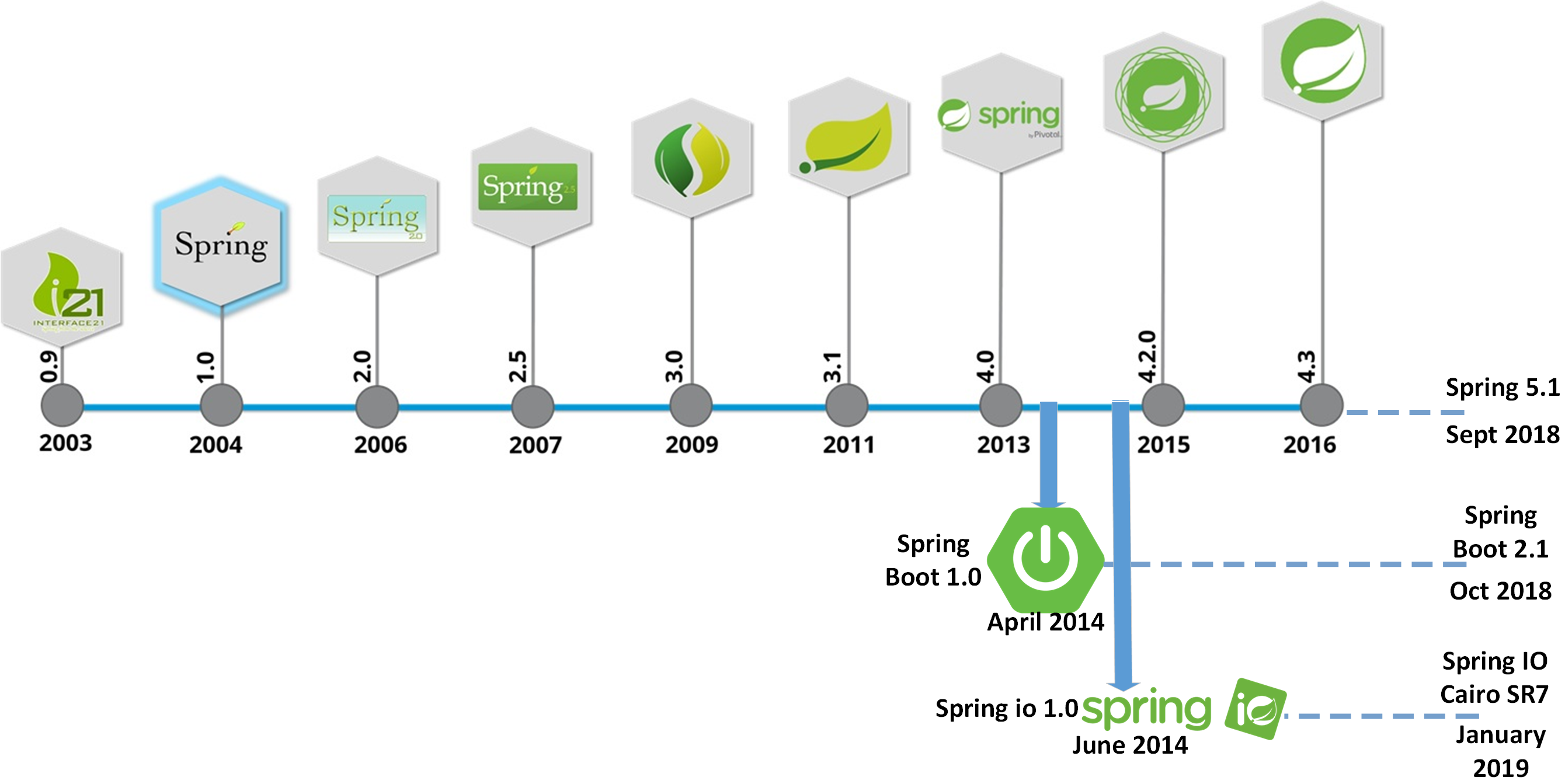Spring Boot - production-grade Spring-based Applications that you can “just run”

by Andrei Simion-Constantinescu (top right),
Hendrig Sellik (top left), Milko Mitropolitsky (bottom left),
Viktoriya Kutsarova (bottom right)
Abstract
Spring Boot is an open source project part of the Java Spring Framework designed to simplify the creation of stand-alone, production-grade Spring-based applications. Spring Boot has revolutionized the way production-ready applications are developed, allowing developers to focus more on the application logic rather than spending time on boilerplate code to handle the necessary configurations and dependencies to run the application. Spring Boot is used in many enterprise solutions (e.g Netflix) for the fast building of massive applications, especially web-based ones. This chapter will be going from introducing Spring Boot’s stakeholders and their roles in the decision making process to looking at the project from multiple perspectives like the Context View, Development View and Functional View. Finally, a research of the impact of Technical Debt is provided followed by the final conclusions of this project’s complex architectural analysis.
Table of Contents
- Introduction
- Stakeholders
- Context View
- Functional View
- Development View
- Technical Debt
- Conclusions
- Bibliography
- Appendix A
- Appendix B
Introduction
Spring Framework for Java was born in February 2003 after Rod Johnson’s book Expert One-on-One J2EE Design and Development 1 was published. In his book, the author described how a scalable high-quality application can be developed without Enterprise JavaBeans (EJB) framework using dependency injection in addition to ordinary java classes. Over the years, one of the most criticized aspects of the Spring Framework was the complex dependency management handled by massive XML configuration files.
Spring Boot was launched in April 2014 resolving the problem of complex XML configurations by having three notable features that make it both unique and easy to use:
-
intelligent auto-configuration - setting the application based on the surrounding environment and information provided by the developer
-
stand-alone - eliminating the need of deploying to a web server or any other special environment by embedding Tomcat, Jetty or Undertow servers directly
-
opinionated - saving developer’s time by configuring the most popular libraries by default in the most standard way
Due to the power of creating Spring-based applications that can “just run,” Spring Boot’s popularity grew faster. Spring Boot is being used by many large companies such as Netflix, American Express, ESPN, Mobile.de, Wix.com etc. To present a complete architectural description of Spring Boot, we follow the approach defined by Rozanski & Woods (2012) 2, starting with the Stakeholders analysis, followed by multiple architectural views such as the Context View, the Development View, the Functional View and continue with the Technical Debt analysis before drawing the final conclusions of this chapter.
Stakeholders
The stakeholders of Spring Boot are described in Table 1. Categories used correspond to the stakeholder types described by Rozanski & Woods (2012) 2. In the Other stakeholders section, we have identified additional people and organizations concerned with the Spring Boot project.
| Category | Stakeholders |
| Acquirers | Pivotal company, with their Board of Directors and leadership team. |
| Assessors | The Board of Directors of Pivotal have created a corporate governance framework. |
| Communicators | Pivotal offers Spring Boot training courses for developers, architects, system administrators, and technical managers. The official Spring Boot documentation and reference guide are created and maintained mainly by the core engineering team. There is also large community support on Gitter. |
| Developers | Main developers of the system are part of the Pivotal company. Most active ones are Stéphane Nicoll, Andy Wilkinson, Madhura Bhave. The founder Dave Syer and co-founder Phil Webb have also contributed a lot in the development process. |
| Maintainers | Overlapping with developers. Mostly Stéphane Nicoll, Andy Wilkinson, Madhura Bhave. People from the Spring community are also actively contributing to improving the project. |
| Suppliers | Spring Boot is built on top of Java SE and Spring Core. |
| Support staff | Spring Boot team is monitoring stackoverflow.com for questions tagged with spring-boot. Chat with the community happens on Gitter. Reporting bugs happens at their GitHub repository. |
| System administrators | Administrators of Spring Boot are the software engineers that have incorporated Spring Boot in their projects and products. |
| Testers | Large overlap with developers and maintainers. Andy Wilkinson and Phil Webb seem to be mostly contributing to the testing parts. |
| Users | A large user base in the Java world. Both individuals and large companies. Examples of companies: KLM Royal Dutch Airlines, ING, Philips. |
Table 1 - Stakeholders of Spring Boot
Other stakeholders
-
Spring ecosystem stakeholders - As Spring Boot is part of the whole ecosystem of Spring, other Spring projects (Spring Core, Spring Cloud, etc.) are important stakeholders that can affect the decision-making process for the framework.
-
Contributors - Spring Boot is an Open Source system and various developers are contributing to the software.
-
System Architects - Phil Webb is the lead architect of the Spring Boot project. Along with his colleagues at Pivotal, they are the ones forming the architecture of the framework.
-
Courses and instructors - there are plenty of tutorials, courses and instructors that are helping the Java community integrate the project within their own applications. Some examples are Ken Kousen, Udemy, Baeldung and SpringFramework Guru.
-
Open source projects - Spring Boot is extremely popular in the Java world. There are plenty of open source projects based on the framework. As such, they are interested in and dependent on the development of Spring Boot. Some examples are JHipster, Java Blogs Aggregator, Project Sagan. Another example can be found here.
Integrators and Decision-making process
Spring Boot is an avid example of an open-source system. It is backed up by a company (Pivotal) and is accepting contributions from anyone who complies with their code of conduct and signs a release form. All of the work is done in GitHub, and the mergers and maintainers of the code are members of the Pivotal team. The process analysis is based on some of the most commented issues and pull requests in the Spring Boot repository, described in Appendix A.
Most of the time contribution and decision-making follow a similar path. The work pipeline first requires an issue or a pull request (PR) creation from a team member or a contributor from the community. Contributors are strongly advised to create a small proof-of-concept project and create a pull request with the example in the spring-boot-issues repository. After that, the issue is either declined or approved.
The decision of what issues to be included, as well as which issues are relevant and should be pursued in a release seem somehow centralized. There is no evidence of a wide discussion for the general direction of the framework which seems to be decided internally at Pivotal. Issues added by contributors are mainly about bugs and smaller enhancements. The decision is also influenced by the number of people requesting a certain feature.
After approval, the PRs regarding the issue are merged after a discussion between the contributor and team members. Team members often lend a hand with polish and code standard compliance. Some issues can interfere or intersect with the work on other Spring projects (e.g. Spring Data, or Spring Cloud). In that case, representatives of those projects voice their concerns or comments. Issues might be declined if they are postponed for too long and become irrelevant, or if the Spring Boot team decides it is not in the direction they want to bring the product.
Work is done on release branches (e.g. 2.1.3.RC, 2.1.4.M2, etc.) following their release train. Those branches are regularly merged into the Master branch of the project. PRs are merged into the release branch by members of the team. Most often these members are Andy Wilkinson or Phil Webb, as well as Stéphane Nicoll. Phil Webb and Dave Syer are the project’s creators and sometimes partake in the discussions.
Power-interest grid
After identifying the stakeholders for the Spring Boot project, a power-interest matrix was created. The grid classifies the stakeholders according to their power over the project and their interest in it.
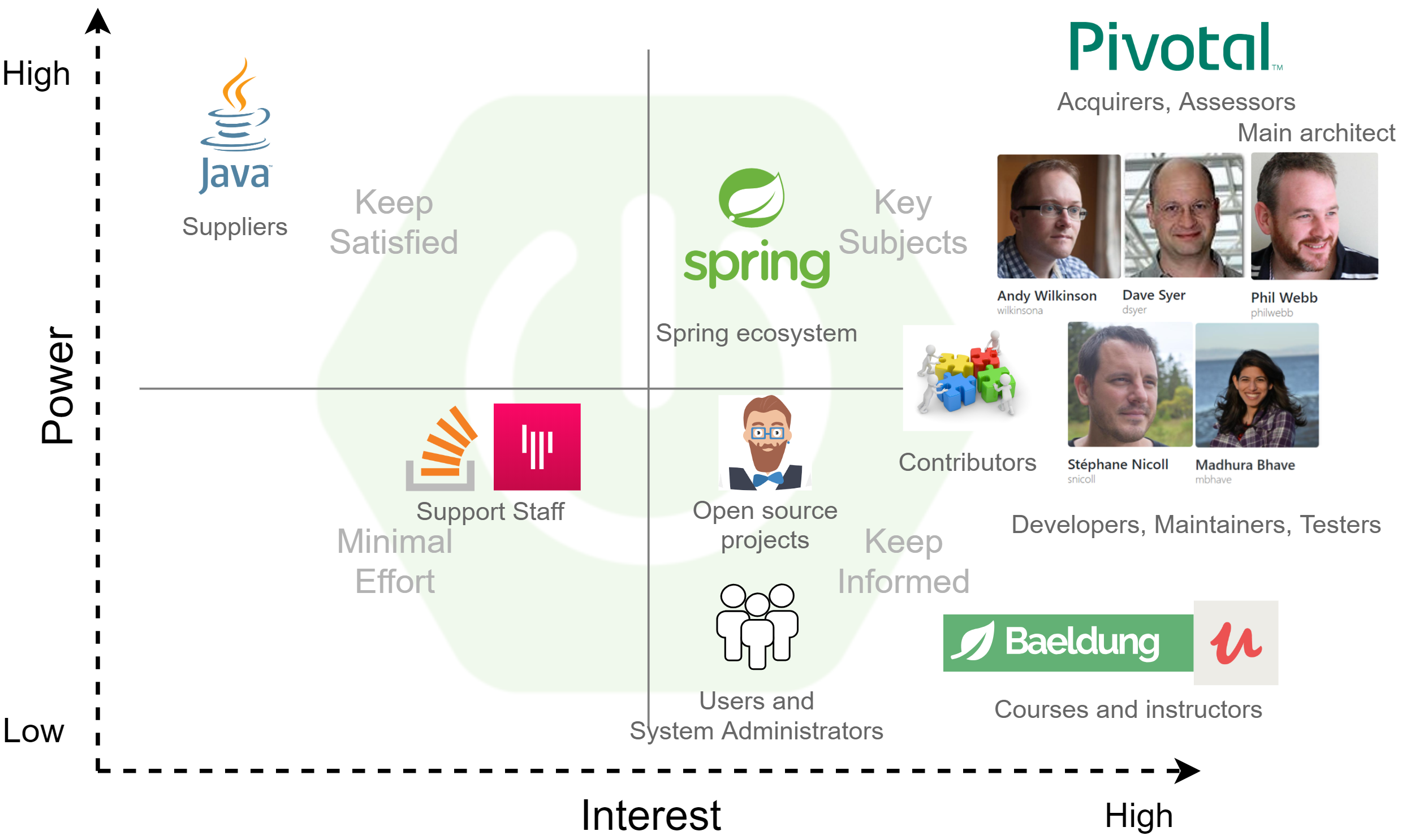
Figure 1 - Spring Boot Power-Interest Diagram
People to contact
After going through various sources of information regarding Spring Boot, our team came to the conclusion that the following three people would be the most interesting to contact:
| Name | Reason to contact |
| Andy Wilkinson | Big role in the decision-making process |
| Phil Webb | Project lead and active on GitHub |
| Stéphane Nicoll | One of the most active software engineers in the project |
Table 2 - People to contact regarding Spring Boot
Context view
In this section, the context view of Spring Boot will be discussed. According to Rozanski and Wood, “Context View describes the relationships, dependencies, and interactions between the system and its environment (the people, systems, and external entities with which it interacts)”. It defines what are the system’s capabilities and constraints and should be understandable to all stakeholders.
System Scope & Responsibilities
Spring Boot is a framework running on the Java Virtual Machine (JVM) and meant to ease the configuration process of Spring-based applications. It also addresses the learning curve of using the Spring ecosystem, which prohibited new developers from adopting it (Spring Framework #14521). This means that Spring Boot has excellent support for a vast range of Spring ecosystem projects such as Spring Data, Spring Security, Spring Cloud etc. Spring Boot includes the following capabilities, also described in the documentation and this article:
- Provide an opinionated and out-of-the-box Spring application with pre-selected configurations, but get out of the way once requirements start to diverge from the defaults.
- Give a range of non-functional features such as metrics, security, health checks, embedded servers, and externalized configuration.
- Offer a fast and accessible getting-started experience for Spring applications. This includes embedded Tomcat, Jetty and Undertow servlet containers which remove the need to set them up manually.
- Provide minimal and intuitive annotation-driven configuration. One of the main problems with Spring Framework is a lot of boilerplate configuration, such as XML descriptors and annotations. While it is true that the Spring Framework can be configured without XML as well, it is not as convenient as Spring Boot’s configuration.
- Provide CLI (Command Line Interface) tool to develop and test Spring Boot applications from command prompt very conveniently and quickly.
- Offer lots of plugins to develop and test Spring Boot Applications easily using build tools like Maven and Gradle.
- Provide the opportunity to use an embedded in-memory database or effortlessly connect to existing SQL database such as PostgreSQL, Oracle DB, etc.
All this makes Spring Boot a good starting point to develop production-ready Spring applications with minimal effort while making it easy to create custom modifications.
Context View Diagram
Context View Diagram can be seen in Figure 2 with the entities further detailed below.
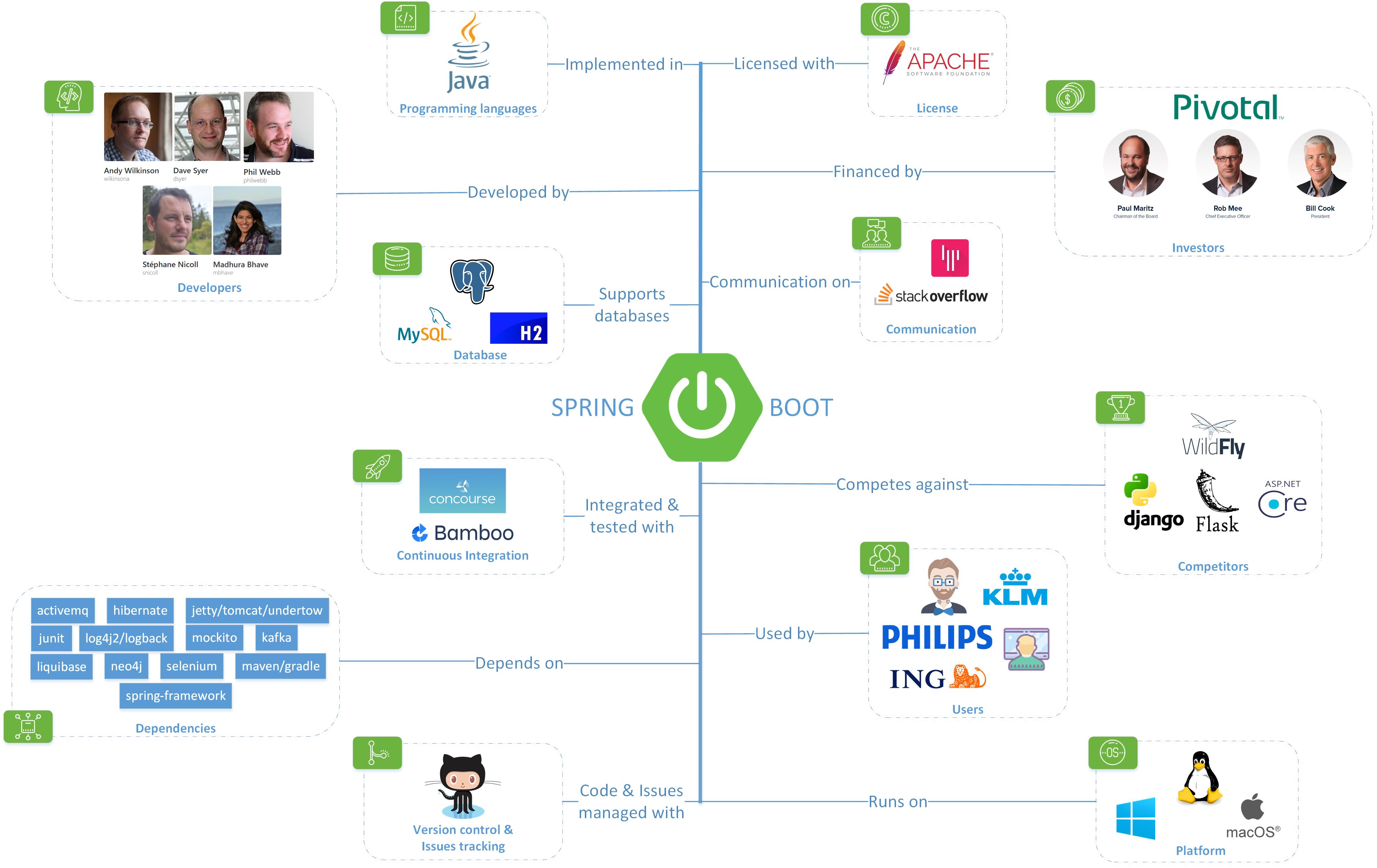
Figure 2 - Spring Boot Context Diagram
-
Languages - Spring Boot is developed almost exclusively in Java (being an extension of the Spring Core Framework). According to the information found on Spring Boot GitHub Repository, the rest (HTML, Groovy, Javascript, Shell, Kotlin) make up less than 2% of the codebase.
-
Contributors - Main contributors to this project are employees of Pivotal (most notably Andy Wilkinson, Stéphane Nicoll, Phil Webb, Dave Syer, and Madhura Bhave). Pull requests from third-party developers are accepted and encouraged.
-
Database Support - Spring Boot supports embedded databases such as H2 but also accepts connection to a wide variety of databases through easily configurable JDBC drivers. Spring Boot also supports Spring Data which offers powerful object-mapping abstractions.
-
Investors - Spring Boot is financed by Pivotal.
-
License - Spring Boot is an open-source project released under the Apache 2.0 license.
-
Communication - Open and informal discussion about Spring Boot is on Gitter. Spring Boot used to have a forum managed by Pivotal but they decided to move it over to Stackoverflow. Some of the communication is also happening on the GitHub issue tracker.
-
Issue Tracking - Spring Boot’s issues are tracked in GitHub issue tracker. People can also submit pull requests on GitHub.
-
Continuous Integration - For CI, Spring Boot project uses Concourse CI and Bamboo.
-
Dependencies - Even if the end-user will probably not be using all the dependencies, Boot project has to maintain all the options and therefore is dependent on a number of third-party software. Key dependencies include Maven/Gradle for dependency management, Tomcat/Jetty/Undertow for Java servlet containers and the Spring framework itself.
-
Platform - Spring Boot is usually run on Windows, Ubuntu and other Linux based operating systems but it can run everywhere where Java Runtime Environment is available.
-
Users - Spring Boot is used by individual developers to create minimum viable products (MVPs) as well as companies for Spring-based Web applications and microservices. This means that the users’ skill level varies greatly. Spring Boot is also used as a core dependency by third-party open source software, such as JHipster.
-
Competitors - For deploying Java microservices, WildFly is a competitor to Spring Boot, but it is not as widely used and has a smaller community. Django is a popular alternative in Python, which is more lightweight but may not have all the enterprise solutions Spring Boot offers. Other competitors include Flask (Python) and ASP.NET Core (C#).
Functional View
In the System Scope & Responsibilities section, we discussed what features and capabilities Spring Boot has. In this part, an overview is given of how the system interacts with its users and external entities. We try to present the Spring Boot in a way that people working with Java and the Spring ecosystem can get a general idea of what it is about.
Figure 3 - Functional Structure Model of Spring Boot
Spring Boot is comprised of multiple components. Their internal hierarchical structure and dependencies are discussed in detail in the Module Structure section of this chapter. The interactions between the different functional elements are shown in Figure 3.
Generally, the features provided by the project are aimed at the software developers who want to use the Spring ecosystem in their projects. It is a Rapid Application Development framework which allows for swift setup of a new project while allowing for customizations.
### Functional Capabilities
A short walk through the initial parts of an application’s lifecycle will explain where Spring Boot is positioned in the development process and how the project helps it. For the purpose of this example we assume that the developers have already chosen Java as their primary language and Spring Boot as the tool to kick-off the project.
For the sake of simplicity, the example project consists of a Database connection and a REST service.
The project is started by choosing one of the provided starters. They are conveniently bundled dependency descriptors used to simplify the dependency files. Developers can now include a single dependency for a certain functionality (e.g. working with an ORM) instead of the large number of dependency declarations needed otherwise.
The Spring Boot CLI can optionally be used to write Groovy scripts for fast prototyping and creating the project. It gives an alternative to just picking starters and writing boilerplate code in Java.
Developers can then opt-in to the auto-configuration
functionality with a simple annotation. It is one of the most powerful time-saving tools in the
Spring Boot toolset. Based on the dependencies on the classpath,
the framework attempts to configure the application. For example, if
HSQLDB is on the classpath, an in-memory database will be configured with default settings
and values which are based on best practices and common usage models. Of course, Spring Boot
always gives precedence to user-defined configurations over auto-configuration.
As the example project is a web-application which exposes a REST endpoint, a web-server
is needed. Spring Boot provides embedded web-servers
out of the box. The server is embedded in the resulting stand-alone .jar. As with other
configurations, it is completely customizable.
In order to speed up the development process even further, quality-of-life improving tools module dev tools with features such as automatic restarts and resource caching can be used.
Using the provided tools, the example project can now expose a REST endpoint and
store information in an in-memory database using only a few annotations and can be contained
in a single executable .jar file. However, a running app needs to be monitored and audited.
Spring Boot offers a solution to that as well with the
Actuator.
The Actuator provides endpoints such as healthcheck and auditevents to ease that process.
External Interfaces
Spring Boot makes it easier to start up and run a production-ready software quickly. However, most of the features (except the Actuator) it has, are provided by external sources. Creating a software application can be complicated but is helped by the various projects in the Spring ecosystem - from managing work with a database with the Spring Data projects to creating web applications with Spring MVC. All of those can be configured separately, but Spring Boot is very good at configuring and orchestrating them. It is created to alleviate the difficulties when creating an application and to allow developers to focus on the business problem they are facing.
As mentioned in the System Scope & Responsibilities Spring Boot is the answer to the critique of the Spring ecosystem and its steep learning curve. As such, its external interfaces are connected with the various Spring projects and indirectly with the service providers that some projects work with (e.g. different databases when using Spring Data).
Development View
Module Structure
Spring Boot is comprised of several modules, each serving a different purpose. A high-level overview of the module hierarchy is shown in Figure 3.
Figure 3 - Spring Boot high-level module structure. Overlapping indicates a dependency between modules.
spring-bootis the main module, which provides features and methods that are used by the other modules of Spring Boot. For example, the ability to create applications with embedded web servers (e.g. Tomcat or Jetty).spring-boot-autoconfigureis responsible for the opinionated configuration of a Spring Boot application based on the contents of the classpath. It is also base for otherautoconfigureendpoints.spring-boot-actuatorprovides the infrastructure and endpoints to monitor and audit applications.spring-boot-actuator-autoconfigureprovides the configuration of different endpoints based on classpath content.spring-boot-testcontains annotations and methods to write tests.spring-boot-test-autoconfigureautomatically configures the tests and their dependencies based on what is present on the classpath.spring-boot-devtoolsis a toolset for quicker and smoother development with features such as automatic restarts.spring-boot-loaderallows a Spring Boot application to be packaged in a single stand-alone Java archive (.jar) with all dependencies bundled (including web servers).spring-boot-cliis another developer oriented module providing a simple command line tool to quickly script and get an application up and running.spring-boot-startersare a set of modules providing prepackaged dependency descriptors so that developers need to manage only a single dependency.
Codeline Organization Model
For creating the Codeline Organization Model, we analyzed the project directory
structure from the
Spring Boot GitHub repository.
The overall code structure of Spring Boot can be seen in Figure 4, with the main
application folder spring-boot-project being further expanded.
Figure 4 - Spring Boot Code Structure
The Functionality Part of Spring Boot contains multiple modules that are grouped
in the spring-boot-project folder. These modules were described in detail in the
Module Structure. Each of the sub-folders (with a few exceptions
such as spring-boot-starters which contains XML dependency
descriptors) is organized into a src folder, which contains main and test
folders for module source code and module unit tests (following the
standard maven structure)
and a separate pom.xml file among other properties and configuration files.
The Development and Deployment Part of Spring Boot is handled in spring-boot-tests
for deployment (/spring-boot-deployment-tests) and integration
(/spring-boot-integration-tests) tests. For Continuous Integration the
Concourse pipeline scripts are grouped in ci.
The folders eclipse and idea are used for providing support for
Eclipse and IntelliJ IDEA
to people that want to contribute.
The Documentation Part is contained in spring-boot-samples with Java sample
applications and spring-boot-cli/samples with Groovy samples for the command
line application. Javadoc
and Asciidoctor documentation are found in spring-boot-docs.
Other Asciidoctor files are placed in the root folder explaining the contribution pipeline,
how to get support and so on. The repository root also contains the
maven wrapper to ensure that the
build has everything necessary to be run independently. By using the maven wrapper,
mvnw, the reference documentation in HTML format can be built. The generated documentation
can be found at spring-boot-project/spring-boot-docs/target/generated-docs/reference/html.
Common Design Model
In this section, part of the common design model is identified and discussed.
Standardization of Codeline
As previously mentioned in Codeline Organization Model, the actual program code and the unit test code are structured as follows:
src/main/java/com/foo/Bar.java
src/test/java/com/foo/BarTests.java
Apart from the obvious codeline organization advantage, this ensures that unit tests are written separately from the mainline code, but still have access to package protected classes, methods, etc.
Object-Oriented Programming (OOP)
As most big Java projects, Spring Boot project uses the OOP paradigm. This has well-known advantages such as encapsulation, inheritance, and polymorphism. While conducting an interview with Stéphane Nicoll, he explicitly stated that the Spring Boot team tries to keep classes and classes contents as private as possible.
Dependency injection
Spring Boot uses the
dependency injection
technique. This allows enforcing the Inversion of Control principle which helps to increase the
modularity of the project and make it more extensible. The Spring Boot project uses the
@Autowired
annotation in most cases for dependency injection which was introduced by the Spring Framework.
Modularity
When discussing with Stéphane Nicoll from the Spring Boot team, he stated that the Spring Boot project aims to have stand-alone modules which are not interdependent. The goal of this is to minimize coupling which increases maintainability of the code. While they make the code modular, they also wish to avoid making split packages.
Message logging
Spring Boot’s logging relies on Commons Logging API for all internal logging and provides default configurations for Java Util Logging, Log4J2 and LogBack implementation of the API.
The default format for Spring Boot log messages is the following:
2014-03-05 10:57:51.112 INFO 45469 --- [ main] org.apache.catalina.core.StandardEngine : Starting Servlet Engine: Apache Tomcat/7.0.52
2014-03-05 10:57:51.253 INFO 45469 --- [ost-startStop-1] o.a.c.c.C.[Tomcat].[localhost].[/] : Initializing Spring embedded WebApplicationContext
By default, the logs are only displayed in the console. They can also be stored in a file,
which requires configuration
(e.g. in application.properties).
Testing and Release Models
Testing process
Integration tests, located in module spring-boot-tests
(see Codeline Organization Model), are executed with every PR,
as well as on every release. In addition, when a version is ready to be released, deployment
tests (located in the same module) are also executed.
Release process
Spring Boot project is using Concourse for CI. The release versions of the project consist of milestones (M#), release candidates (RC#) and general availability releases (RELEASE) (expected to be stable and feature complete). There are also service releases, used for maintenance after a major release. Each release is available on repo.spring.io and GA are also available on Maven Central.
A prime example of the release process is the release of the major version 2.0.0
and can be seen in Figure 5.
Figure 5 - Spring Boot release process for the major version 2.0.0
Like all the other projects in the Spring ecosystem, there is a strong set of rules for versioning the releases of Spring Boot. This is not just following best practices, but the community download page depends on the naming and semantic details of the release artifacts.
Scripts for releasing a version can be found in the ci module. Each version is accompanied
by release notes which can be found in the
Wiki
section of the GitHub repository. Release notes contain information on how to upgrade
from a previous version, new noteworthy features, as well as various deprecations.
Technical debt
Technical debt is a concept in programming that reflects the extra development work that arises when code that is easy to implement in the short run is used instead of applying the best overall solution.
Identifying technical debt
Identifying technical debt in a project is an extremely challenging task. We used automated code inspection tools, but they can only support the identification process. Our team interviewed one of the leading software engineers of Spring Boot - Stéphane Nicoll - who gave us valuable insights on how big the technical debt is and what does the project’s team do to keep it to a minimum.
Static code analysis
Static code analysis is done using SonarQube, to understand the technical debt of Spring Boot.
There are four main elements that the static code analysis tool emphasizes on:
- Bugs and vulnerabilities - Most of the bugs identified by SonarQube are minor. Still,
the tool gives Spring Boot a Reliability Rating
E, which stands for at least one blocker bug in the code, shown in Figure 6.
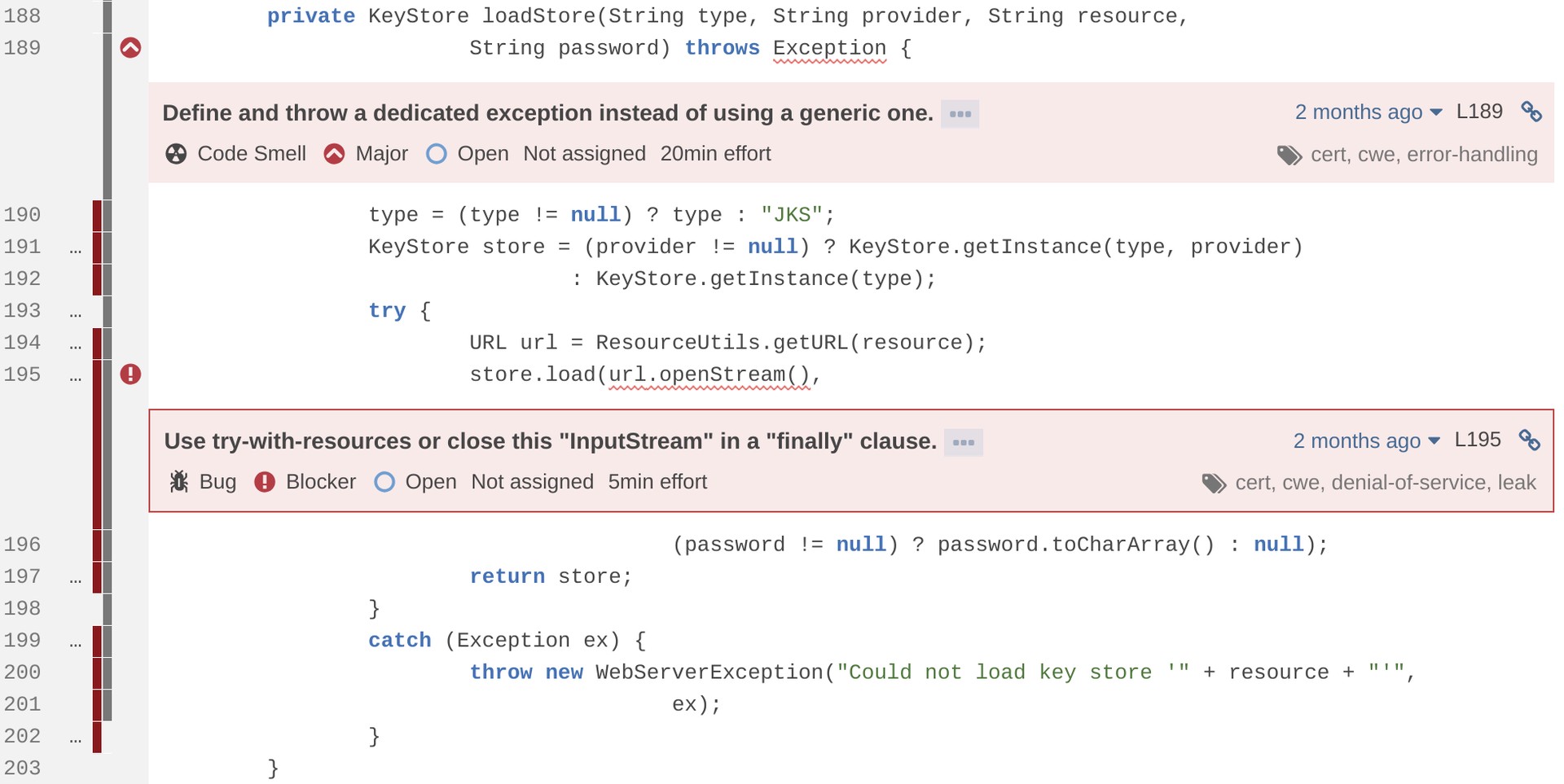
Figure 6 - Critical issue - Not closing an input stream can lead to memory leaks.
-
Code smells - Technical debt ratio of the Spring Boot project is less than
5.0%, according to SonarQube. This result indicates that the Spring Boot team takes quality in a serious manner as was confirmed by the conducted interview. -
Duplications - According to SonarQube the code duplication is only
0.7%hence it is not a big problem for the framework. -
Cyclomatic complexity - Using SonarLint and manual code inspection, we have identified several cases of high Cyclomatic complexity 3. An example can be seen in Figure 7 where the recommended value is exceeded.

Figure 7 - High cyclomatic complexity (21) in Spring Boot
Spring Boot overall has a small amount of technical debt. Some of it is known to the development team. This deliberate debt is placed in a separate milestone. The issues in this backlog are not yet scheduled for a particular release and are mostly bugs or enhancements that Spring Boot team wants to solve in a future version.
Insights from Stéphane Nicoll
Spring Boot’s core team engineer Stéphane Nicoll discussed the technical debt of the project in details in the interview we did. In this section, we put some of the most exciting findings according to our team:
-
Major refactoring - Spring Boot team had to perform a significant refactoring of the
actuator moduleonce Spring Framework implemented the reactive paradigm. The module heavily relied onSpring MVCthat usesservlet containers, which is not compatible with the new reactive style. The team decided to rewrite the whole module from scratch but kept its public API. -
For team attention - we have noticed flagging of issues with a label
for-team-attention. Once an issue is created (either from a team member or from a contributor), a team member can label it. The team holds two meetings every week. During those meetings, the person who marked an issue explains the reasoning behind it, and then the participants in the meeting collectively decide how to handle the problem.
Stéphane Nicoll confirmed our finding that the Spring Boot team tries to keep the technical debt to a minimum and is building its code base with great care for readability and quality. A remarkable fact is that the Spring Boot team does not use a technical debt identification tool, apart from the static code analysis tool provided by IDEs. As Stéphane stated, “we don’t use any tool, we don’t see any benefit from using one”. The team works “in an organic way”, relies mostly on experience, strong sense of belonging to the project and is heavily influenced by the Spring community. In his words:
If we do something wrong, the community will kick our asses anyway.
Testing Debt
Issue analysis (#13526 and #14684) prior to interview with Stéphane Nicoll made us believe that there are no code coverage reports in CI tools. This was later confirmed while conducting the interview.
The project has an advanced testing environment with embedded Docker containers
(#10516) and Servlets
which makes test coverage of the project high. The test suite is
simple to run on the command line with ./mvnw verify.
IntelliJ IDEA built-in code coverage tool was used to run unit tests on most important
modules, which were spring-boot, spring-boot-actuator,
spring-boot-actuator-autoconfigure and spring-boot-autoconfigure.
The results show that those modules are very well tested
with class and line coverage being mostly over 90% (see Table 4).
| Module | Class Coverage | Line Coverage |
| spring-boot | 93% | 90% |
| spring-boot-actuator | 94% | 93% |
| spring-boot-actuator-autoconfigure | 95% | 90% |
| spring-boot-autoconfigure | 89% | 93% |
Table 4 - Test coverage for Spring Boot’s main modules
Therefore it can be said that testing debt of Spring Boot is minimal and will not affect the project negatively if kept at this level. However, the project could make use of automated tooling to report on potential testing debt and make this information available to contributors.
Evolution of technical debt
In order to “calculate the trends of the technical debt time series” 4 for the Spring Boot project, we first need to take a look at the history of the whole Spring Framework. The evolution of Spring Framework from interface21 to SpringSource and finally Pivotal is displayed in Figure 8.
Figure 8 - History of Spring Framework (adapted from here)
Spring Boot was launched in April 2014 due to the need for support for containerless web application architectures in Spring Framework with Phil Webb as lead architect, after Pivotal was created in 2013. Due to this, Spring Boot was not affected by a major change in management that could determine Technical Debt arising from different performance management styles.
Another aspect related to the evolution of technical debt from the Spring world is the launch of Spring IO in June 2014. Generally, as a release pipeline, a new Spring Framework version will trigger a new Spring Boot release followed by a Spring IO platform release which incorporates the new version of Spring Boot. The Technical Debt arising from here is related to the decreasing difference between Spring Boot’s and the platform’s dependency management. That is the reason why Spring IO Platform end-of-life was announced with Cairo being the last maintained version.
The fact that “software process evolution has a clear effect on technical debt” 5 was proved in Spring Boot project by a major switch. When Spring Boot decided to replace their CI platform from Bamboo to Concourse, they benefited from having a platform maintained by Pivotal. The migration to Concourse was problematic, but it was a known fact to the developers and they took the effort to remove the debt later on.
From its conception until today Spring Boot has had steady growth in the code base (as seen in Figure 9) but we did not manage to find any major technical debt issues.
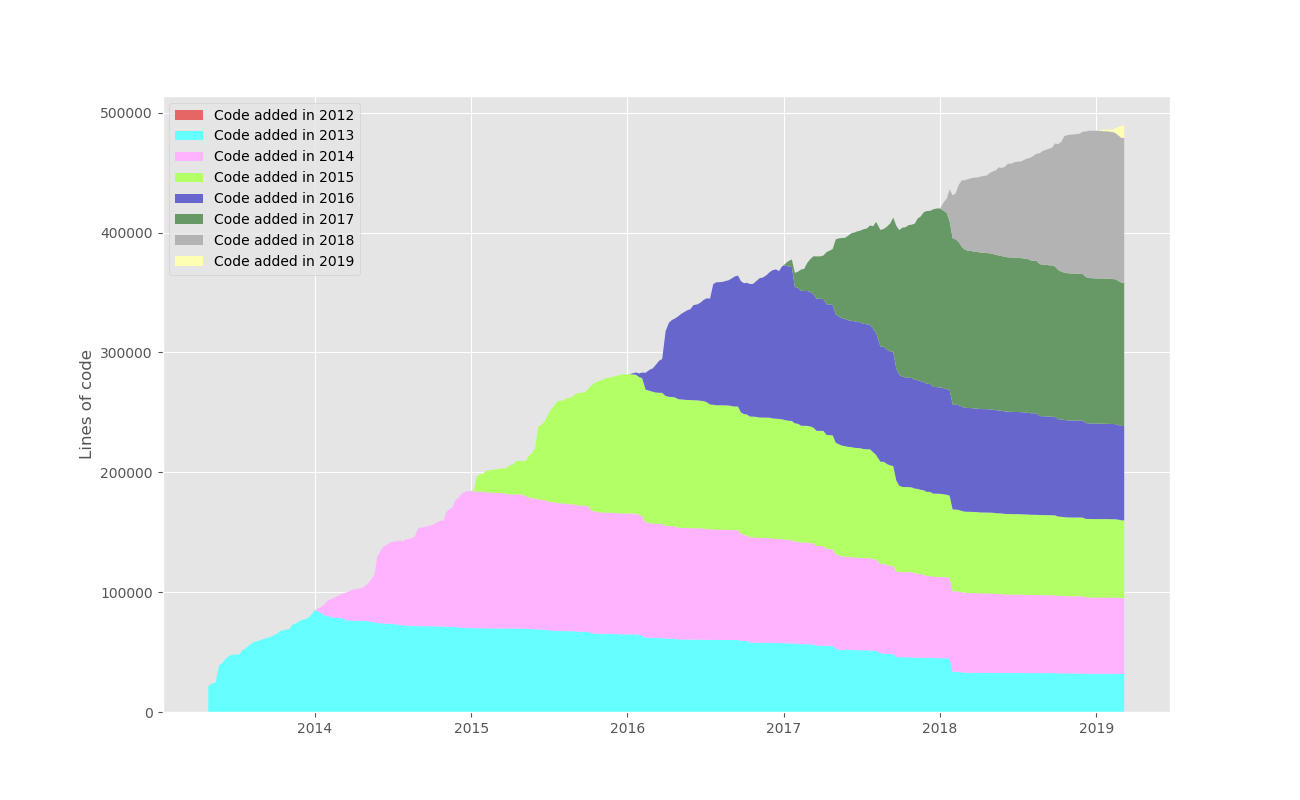
Figure 9 - Evolution of code size (Made using git-of-theseus)
Discussions about technical debt
Spring Boot’s team generally uses Labels
to identify and characterize issues. There are currently 29 labels, but none of them is directly
related to technical debt (e.g. technical-debt, or refactoring).
On the other hand, when searching through the issues on GitHub, there are less than 90 issues out of more than 16000 issues in total mentioning technical debt or refactoring. Usually, these are proposing some behavioral changes (for example #14680). There are some issues created by the team with known technical debt (#14412). However, the maintainers are very cautious to make major changes, as they might be breaking ones to some end-users that have already adopted the existing functionality.
TODOs and FIXMEs for the whole project are an almost negligible amount. They mostly relate
to testing scenarios rather than actual functionality. There are only
two examples
of FIXME that are in the mainline code that are not about changing the name of a method.
The cleanliness of the code is helped by the reviews of team members before merging. Another reason is the provided code style guidelines and schemes for IntelliJ IDEA and Eclipse, which disallow comments in the code, as well as other polluting elements like unused imports.
Possible Improvements
We chose to propose two improvements to the Externalized Configuration functionality, which now allows expressions instead of a fixed list of profiles defined by the users.
Stéphane Nicoll pointed out that after introducing expressions for profiles, the changes have caused quite a few bugs and they have not decided on how to tackle them. Analyzing the GitHub issues confirmed the technical debt.
The first problem is the wrong order of profile overriding. We suggest deciding on an intuitive solution on profile configuration ordering that is based on industry standards. Specifically, old GitHub issue #3845 indicates that instance specific values (outside JAR) should override environment (i.e. PROD, TEST, etc.) specific properties embedded in the application (JAR). Hence, in current configuration ordering, this:
1. Command line arguments.
...
7. Profile-specific application properties packaged inside your jar (application-{profile}.properties and YAML variants)
8. Application properties outside of your packaged jar (application.properties and YAML variants).
9...
should become this:
1. Command line arguments.
...
7. Application properties outside of your packaged jar (application.properties and YAML variants).
8. Profile-specific application properties packaged inside your jar (application-{profile}.properties and YAML variants)
9...
where configuration with a smaller number will override the one with a higher number.
The second problem is related to referencing profiles. In Spring Boot configuration, you
can use spring.profiles.include keyword to add different application profiles (other configurations).
The problem arises when profiles with higher
ordering
than the original configuration file, are referenced. In this specific case, the referenced profile has
no effect, and this behavior is unexpected by the users.
The issue can be solved by giving
spring.profiles.include special privileges which would combine values across all configuration
files. This solution was also suggested in
#16023.
The proposed changes would be breaking ones, but they are eventually unavoidable and deal with the technical debt to avoid future complications regarding profiles in Spring Boot.
Our team has also actively contributed to the Spring Boot project as shown in Appendix B.
Conclusions
This chapter provides an overview of the Spring Boot project whose purpose is to simplify the work with Spring Framework. We analyzed Spring Boot’s Stakeholders, Context View, Functional View, Development View and Technical Debt.
During our work, we found that the Spring Boot team is really community oriented which was confirmed by a video call with Spring Boot core developer, Stéphane Nicoll.
The project’s architecture is divided into independent modules. While they do not have a list of requirements to follow specific coding principles, such as SOLID, they rely on experience and pragmatic thinking to apply good coding practices along with strict contribution guidelines.
Looking into Technical Debt, we found that Spring Boot has good test coverage. While analyzing issues, the SonarQube report and interviewing Stéphane Nicoll, we concluded that the project also has a very small technical debt. To our surprise, they use no tools for code coverage other than the ones provided by the IDEs.
Overall, it can be said that Spring Boot is heavily used by the Java community and the design decisions are taken with great care. Therefore Spring Boot will undoubtedly remain as one of the go-to choices for creating web and enterprise applications with Java.
Bibliography
using viewpoints and perspectives. Addison-Wesley, 2011.
Appendix A
A compilation of researched issues and pull requests from the Spring Boot repository is presented below.
| PR | Context | Final Decision |
ASCII art banner generated from an image |
Big discussion about adding ASCII image to the loading screen or not, with a rather humorous tone. No real discussion of whether or not it should be merged - all opinions are positive. Proposed by a third-party committer. |
Unanimously accepted by all parties, i.e. team members, contributors and members of other Spring teams. Merged by Phil Webb for release 1.4.0.M2 |
Add Quartz Scheduler support |
The issue was proposed by an active contributor (vpavic). It was met with a big positive response from the community (many +1s) and the team members. |
It took more than 1.5 years for it to be approved and merged. Merged in version v2.1.3.RELEASE by Andy Wilkinson in 2017. |
Make run_user for the launch script configurable |
The creator is a first-timer and he created a PR and an issue. The team marked the issue as a duplicate to the PR with the comment “no need to create an issue and a PR. A PR is enough, thanks!”. Discussion about the PR is straightforward and only minor comments are made by the team and some contributors. Note: If someone is too slow to respond, the ticket is passed down to other people |
It took exactly 1 year to be merged in release 2.1.0.M3. Merger: Andy Wilkinson |
Add auto-configuration for WebServiceTemplate |
The issuer (first-timer) created a PR directly without an issue. There was no answer from the team, so he persisted and pushed them for one. After that, a back-and-forth communication between the contributor and the team starts in order to fix code issues. Part of the discussion is whether or not this feature should be part of Spring Boot, or another Spring project. |
In the end, the PR is merged after only 2 months in v2.1.0.M1 Merger: Stéphane Nicoll |
Introduce HealthIndicatorRegistry |
An issue is created. A discussion ensues what might be some use cases for the proposal. After that, this PR is created. There is a discussion about the code. |
The merging is postponed for after the major change to add reactive streams to the code base of the project. After that, the issue is merged. Merger: Stéphane Nicoll Time needed: 2.5 years |
Provide a @DataMongoTest similar to @DataJpaTest |
A simple technical discussion. Note: Apparently PR is interchangeably used with an issue in GitHub. The interesting thing here is that team members merge suggestions from people, however, they might add some polishing to the PR (with consent from the author of the PR, of course). |
Merged after only a couple of months in January 2017 Merger: Andy Wilkinson Release: v1.5.0.RELEASE |
Add Spring Data Neo4j support |
Technical discussion. The Spring team member was not very familiar with the proposed technology, so there was a bit of an explanation phase going on. Stakeholders from other projects pitched in (neo4j and Spring Data) with some knowledge. |
After discussing with the team members of Spring Data and Neo4J, enough context was gained by the Spring Boot team to accept this change. Merged by Stéphane Nicoll Release: v1.4.0.M2 |
Add Couchbase support |
There is a technical discussion between the Spring boot team and the contributor. Members of other Spring projects (Spring Data) pointed out that the target component is being rewritten and this change should wait. “Since the spring-data-couchbase module is in the process of being rewritten and ported to Couchbase SDK 2.x, I think it’d be better to wait for it before starting integration in Spring Boot. See (work in progress)” - Simon Basle |
After waiting for the next major release, the PR is updated with the new changes based on changes of adjacent components. All stakeholders are happy and the PR is merged by Stéphane Nicoll Release: 1.4.0.M1 |
Added Cassandra support for Spring Boot |
Just large technical discussion between the team members and the contributor. A lot of comments from the team members about the code. A contributor asks for status. Otherwise, nothing particularly interesting. |
Merged by Phil Webb Release: v1.3.0.RC1 |
| Add support for configuring ‘lobgack’ logging via JMX | A contributor wants to make an enhancement in the logging module. Wants to make it in the 1.3.1.RELEASE. PR is opened on Nov 14, 2015. The PR is closed in favour of more general logging endpoint. Spring Boot team realizes there is a similar feature in Spring Cloud which they wish to integrate for version 2.0. PR is reopened because the integration with Spring Cloud would happen in release 2.0. After a long and large technical discussion, the contributor and Spring Boot team realize they need a public API from logback to finish the ticket. Since there is no movement from logback side - the PR is closed. |
PR has been opened, then closed and then reopened. First, Spring Boot team did not want to make the configuration too specific (for logback only) - they wanted a generic endpoint. After a new PR was opened by the contributor for the generic endpoint, Spring Boot team realizes such a thing exists in Spring Cloud and would be integrated into a later version. PR was reopened but the team realized they need a public API provided by logback. A ticket was opened in logback Jira. Stéphane Nicoll closed the PR on May 18, 2018, as there was no progress with the logback ticket. |
Fix issue #1668: Added support for custom system class loader to enable loading of various classes that are packaged inside nested jars at the system level |
A contributor opens this PR on Oct 7, 2014. Other contributors seem also interested in the progress of the PR. A large discussion is raised of how to test the enhancement. There seems to be no progress on it. |
Closed by Andy Wilkison on Jan 8, 2016, after internal discussion. Spring Boot team has decided this is an edge case and not needed by the vast majority of Spring Boot users. |
Add Neo4J auto-configuration |
PR created by a contributor on Sep 4, 2015. The main topic in the comments - integration test the sample. Due to other pressing issues, this PR is postponed for the next release. With the new Spring Boot release, there is an update that needs to be integrated into the current PR. The contributor creates a new PR instead of updating the current one. Current one becomes obsolete. |
Stéphane Nicoll closed the PR on Mar 22, 2016. Marked as duplicated in favour of Spring Data Neo4j support. Reason - it duplicated a newly create PR. |
Delegate command line system properties to spring-boot-gradle-plugin runApp task |
PR opened on Mar 27, 2014, by a contributor. Apparently, the issue was introduced with a specific version of Spring Boot. Technical discussion about how to do this. A few other contributors jump in to help with code. Phil Webb closed the PR after the statement that it should be done the way Grails do it. After the PR is closed, there is still a discussion on whether the improvement is needed or not. Andy Wilkinson clarifies at the end that in the 2.0 snapshot, the configuration is back to being the same as in 1.x. |
Closed by Phil Webb on Jan 11, 2017. Reason - Spring Boot team prefers to follow the Grails convention of passing properties, even though the proposed one is easier. |
Make sure that starting a JMS connection does not block infinitely |
PR opened by a contributor on Oct 31, 2017. The change is too large for entering the current release, also due to the fact that Spring Boot team needs to support Java 6. Later on, the contributor dives further into the problem. Together with the Spring Boot team, they discover that the approach to fixing the issue should be different. A new PR was created and the current one was closed. |
Closed by Andy Wilkinson on Nov 15, 2017. Reason - the approach to fixing this issue should be different. A new PR is created for that purpose. |
Add MessagePack support |
Created by a contributor on Nov 21, 2015. On Jan 6, 2016, the PR was marked with status “waiting-for-votes” to see what is the demand for this ticket. One of the comments expresses concern that it is weird to wait for votes to merge the issue. Response from Andy Wilkinson is that ongoing cost needs to be considered after it being merged (more code to maintain, another dependency, another feature for users to understand). In the end, PR is closed because Jackson 2.9 is not supported yet. |
Closed by Toshiaki Maki on Oct 13, 2018. Reason - MessagePack hasn’t supported Jackson 2.9 yet. |
Customize compression only when it is enabled |
Created by a contributor on Oct 12, 2018. A discussion arises whether the issue exists in the current version (2.x) or only in an old one (1.5.x). |
Phil Webb closed this PR on Oct 15, 2018. It is an issue only in 1.5.x and Spring Boot team is trying to keep changes there to a minimum. |
Add @DataElasticSearchTest support |
Introduction of a new annotation by a contributor on Mar 15, 2017. The changes were initially approved. After technical discussion, the PR was polished. Andy Wilkinson jumps into the discussion and points out that ElasticSearch have dropped support of a feature needed for this ticket. He also states that due to this, there are severe restrictions regarding integration tests. |
Andy Wilkinson closed the issue on Feb 2, 2018. Statement - it seems that the situation with the limitation due to ElasticSearch tests won’t change in the foreseeable future. |
Expose Hibernate Statistics |
Created on Jul 24, 2015 to fix issue #2157. Spring Boot team could not figure out a way how to integrate integration tests for Spring Boot 5, which delayed this issues. Two year later, the statistics were move to micrometer and this PR was closed. |
Stéphane Nicoll closed this PR on Oct 3, 2017. Reason - statistics were moved to micrometer team. The contributor should discuss the changes with that team now. |
Add option to configure logging filters |
Enhancement PR, created on Jul 9, 2016. The ticket was moved back and forward for improvements. Andy had some concerns it was not the best approach to tackle the problem. The contributor said he would implement it but could not do it within reasonable time and the PR was closed. |
Stéphane Nicoll closed this PR on Feb 20, 2019. Reason - issue was moved back and forward without any progress, it could be reconsidered again in the future. |
Appendix B
Our team’s contribution to the Spring Boot project is presented in the table below.
Our team is represented in the Spring Boot 2.1.4 release with Update ambiguous documentation about ConfigurationProperties #16166.
-
Johnson, Rod, and Juergen Hoeller. “Expert One-on-one J2EE Development without EJB.” (2003). ↩
-
Rozanski, Nick, and Eóin Woods. Software systems architecture: working with stakeholders ↩ ↩2
-
McCabe, Thomas J. “A complexity measure.” IEEE Transactions on software Engineering 4 (1976): 308-320. ↩
-
Digkas, Georgios, et al. “The evolution of technical debt in the apache ecosystem.” European Conference on Software Architecture. Springer, Cham, 2017. ↩
-
Yli-Huumo, Jesse, Andrey Maglyas, and Kari Smolander. “The Effects of Software Process Evolution to Technical Debt—Perceptions from Three Large Software Projects.” Managing Software Process Evolution. Springer, Cham, 2016. 305-327. ↩

